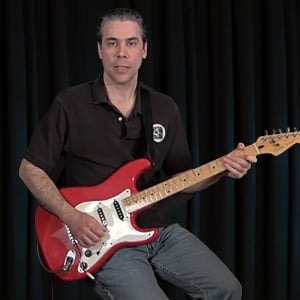Description
Christopher will show you the seven modes of the major scale. He'll show you each mode, how to play it, why it is unique, how it fits into the overall pattern of modes. There will also be play alongs and backing tracks to get a lot of practice at using all the modes.
Lesson Info

Instructor
Christopher Schlegel
- Styles:
- Any Style
- Difficulty:
-
- Files
- Videos / Score
- Published
Contents
- Modes of the Major Scale: Introduction
- Ionian
- Ionian Play Along
- Dorian
- Dorian Play Along
- Phrygian
- Phrygian Play Along
- Lydian
- Lydian Play Along
- Mixolydian
- Mixolydian Play Along
- Aeolian
- Aeolian Play Along
- Locrian
- Locrian Play Along
- Using All The Modes Together
- All The Modes Together Play Along
- Modes of the Major Scale: Conclusion